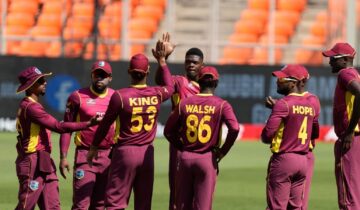With the introduction of T20 Internationals and the popularity of shorter formats, aggressive batting has become an essential part of every aspiring batter’s arsenal. Extensive research on power hitting has revealed that bat speed is a significant factor. Every cricketing coach and aspiring batter wants to improve their ‘bat speed,’ and various coaching techniques are used to accomplish this. Even the best bats can only promise to provide you with a world-class performance if the techniques used are correct.
Let’s look at a few methods for increasing and improving your bat speed that combine sport, physics, and data analytics.
- Using a heavy bat while practising is the most basic way to strengthen the muscles in the bat-swinging motion. You can use a heavier bat than the one you use for games, or you can attach weights to your bat with heavy bricks and perform shadow practice. Alternatively, you can practise shadow swings with two bats, which will help you gain strength and increase your bat speed over time. A heavier bat can jeopardise your bat angles, particularly your backlift angle. Players who use the cricket bat sensor gain access to such unique insights, allowing them to be more informed players.
- Use Weighted Balls to practise: Many coaches have turned to heavier balls to help their players improve their bat speed. This technique is excellent for tricking the muscles into thinking we need to hit harder and faster to achieve the same results as standard match balls. You can gradually improve your bat speed by increasing the ball’s weight.
- Adjust the bat stance for a perfect back-lift: Adjust your batting stance to have more back-lift. A quick and straightforward way to accomplish this is to consciously lift your bat higher using wrist movement. Brian Lara and MS Dhoni are two prominent players with high back lifts.
- Prioritise a high backswing and a longer downswing Arc: Because the bat is already in motion, a high backswing can allow for more excellent downswing acceleration than a stance backlift. A longer downswing arc allows a batsman more time to generate momentum and eventually hit the ball with more impact.
- Forearms strength training and exercise: Strength training can result in a consistent improvement in bat speed. Batters frequently need help with weak forearms, which prevents them from producing the explosive power required for power hitting. Players can improve Forearm strength by using a ‘Gripper’ and overall strength by performing traditional strength training. Several forearm strengthening exercises include Palms up wrist curls, Grip Crush, Pull-ups, and Dead Hangs.
- Find the Best Pickup: We’d all like to have a bat with a massive profile and a lightweight, but this is extremely rare. There has always been much debate about how heavy bats with tremendous profiles can always hit the ball further, but we sometimes have differing views. If you choose a lighter bat, the profile’s and edge’s thickness will likely be smaller, but this is not a problem. Because everyone’s physique and strength differ, selecting a bat that feels right for you is most important.
- Look for the best results: Roughly 5 grades of willow are used to make bats. Grade 1 willow is the best-performing willow, with 8-10 grains and very few or no blemishes on the bat’s face. The least expensive bats are typically made of Grade 5 willow with 4-5 grains and more blemishes on the front. These grades provide a general guideline for how well a bat will perform, but performance varies by bat. If you need a bat right away, bats with higher grades of willow, like Players grade English willow bat, perform well right away, whereas other grades may take longer to play in and reach their peak performance. In some cases, bats made from lower grades of willow may outperform bats made from higher grades of willow.
- Players with higher speed: One can even watch and learn increasing speed by-Watching footage of a.some of the best power hitters.
b.Learning their batting form.
c.Incorporating it into your game
The following are a few great players with the fastest bat speeds and the techniques they use.
- Yuvraj Singh and AB De Villiers – As seen in their batting footage, they use a high backlift angle. Before power hits, Yuvraj Singh used his wrist movement to achieve a high backlift.
- Chris Gayle has been training with heavy bats to improve his bat speed.
9. Determining the Bat speed: Keeping track of bat speed is difficult, so using technology to track your progress regularly may be a viable option. Using a bat speed measuring device to track and visualise improvement in bat speed is critical. Shikhar Dhawan, Vellaswamy Vanitha, and many other international cricketers use the Cricket Bat Sensor to measure bat speed and analyse their mistakes.
Following the steps outlined above, aspiring players can consistently improve their bat speed and elevate their game. While these techniques and technology can improve your game, it is also recommended that you work with an experienced coach who can spot flaws in your technique using both visual and quantitative feedback. Bat speed, along with the right equipment, is an essential factor in power hitting, but shot timing is also important and should be practised thoroughly.












